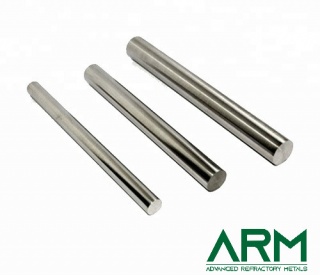Marketing
Main Industrial Uses of Molybdenum
Alloys
As an alloying element of steel, molybdenum has the following advantages. It can increase the strength and toughness of steel, as well as the corrosion resistance of steel in acid and alkali solution and liquid metal; improve the hardenability, weldability and heat resistance of steel. For example, stainless steel containing 4%-5% molybdenum is often used in places with serious erosion and corrosion, such as Marine equipment and chemical equipment.
The non-ferrous alloys are formed by adding other elements (such as titanium, zirconium, hafnium, tungsten and rare earth elements) to the base of molybdenum. These elements not only play the role of solid solution strengthening and maintaining low-temperature plasticity but also form stable and dispersive carbide phases, which can improve the strength and recrystallization temperature of the alloys. Molybdenum based alloy is used for high heating element, extrusion grinding tool, glass melting furnace electrode, jet coating, metal processing tool and spacecraft parts due to its good strength, mechanical stability, and high ductility.
Chemical industry
Lubricant
Molybdenum dioxide is a good solid lubricant because of its low friction coefficient and high yield strength. It can be used in vacuum and various ultra-low temperature and high temperature, so it is widely used in the gas turbine, gear, mold, aerospace, nuclear industry, and other fields.
Catalyst
Molybdenum compounds are one of the most widely used catalysts, which are widely used in chemical, petroleum, plastics, textile, and other industries. For example, molybdenum disulfide has the properties of sulfur resistance and can catalyze carbon monoxide hydrogenation to produce alcohol under certain conditions. It is a promising chemical catalyst C1; the combination of molybdenum, cobalt, and nickel was used as a catalyst for oil refining and pretreatment. Other common molybdenum-containing catalysts include molybdenum disulfide, molybdenum oxide, molybdate, and ammonium parmolybdate.
Pigment
Chromium yellow and cadmium yellow are the most common inorganic pigments in the world today, but lead, chromium, and cadmium are all toxic. Molybdenum yellow is not only non-toxic, but also has a bright color, light, thermal stability is good, and therefore used in pigments and inks, plastics, rubber products, and ceramics.
Corrosion inhibitor
Molybdate has very low toxicity and is very weak for organic additives in corrosion inhibitors, and molybdenum is commonly used in the construction of air-conditioning cooling water and heating systems to prevent corrosion of low carbon steel.
The electronic and electrical field
Molybdenum has good electrical conductivity and high-temperature resistance that is similar to the thermal expansion coefficient of glass, so it is widely used in the manufacturing of spiral filament wire, lead wire, and hook. In addition, molybdenum wire is also an ideal electrode wire for EDM wire cutting machine, which can cut various kinds of steel and hard alloy. It has stable discharge machining performance and can effectively improve the precision of the die.
The monolayer molybdenum material has good semiconductor properties, some of which are better than the widely used silicon and graphene. Some enterprises of recycling waste molybdenum have successfully used MoS2 to manufacture the molybdenum-based flexible microprocessing chip, which is only 20 percent of the same silicon chip size, and the power consumption is extremely low.
Advanced Refractory Metals (ARM) supplies people with high-quality molybdenum metal products such as molybdenum strip, molybdenum tube, etc. all over the world. Please visit https://www.refractorymetal.org for more information.
Post je objavljen 22.08.2019. u 11:57 sati.
